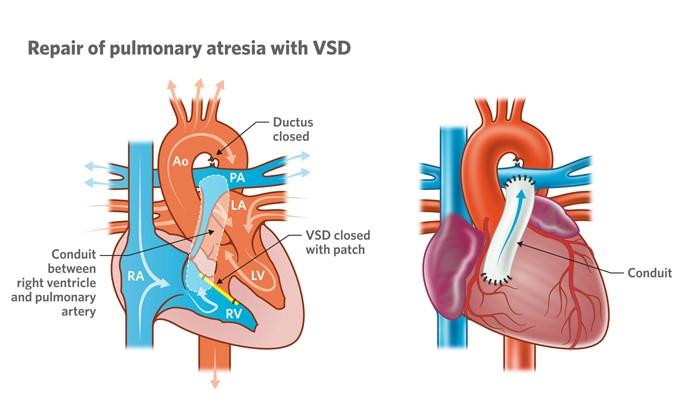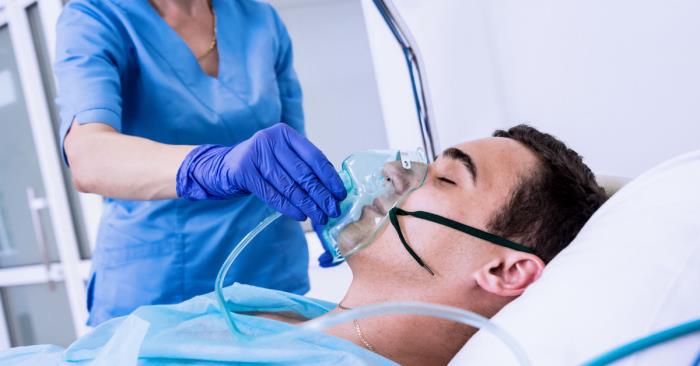Ventricular Septal Defect (VSD) is a congenital heart condition that, if untreated, can lead to complications like pulmonary hypertension. This condition arises when increased blood flow through the lungs causes elevated pressure in the pulmonary arteries. Understanding the connection between VSD and pulmonary hypertension is crucial for early diagnosis and effective management to prevent long-term heart and lung damage.
What Is Ventricular Septal Defect (VSD)?
VSD is a congenital defect characterized by an abnormal opening in the septum separating the left and right ventricles of the heart. This allows oxygen-rich blood from the left ventricle to mix with oxygen-poor blood in the right ventricle, leading to excessive blood flow to the lungs and overloading the pulmonary circulation.
How Does VSD Contribute to Pulmonary Hypertension?
In VSD, the left-to-right shunting of blood increases pulmonary blood flow and pressure. Over time, the sustained high pressure in the pulmonary arteries can cause the vessels to thicken and stiffen, resulting in pulmonary hypertension. This progressive condition can strain the right side of the heart, leading to complications such as right heart failure.

The Role of Increased Blood Flow in Developing Pulmonary Hypertension
The abnormal shunting of blood in VSD creates a volume overload in the pulmonary circulation. This excess blood flow forces the pulmonary arteries to work harder, which can lead to remodeling of the arterial walls and increased resistance. Prolonged exposure to high pressure can escalate into irreversible pulmonary hypertension if not addressed early.
Symptoms of Pulmonary Hypertension in Patients with VSD
Patients with VSD-associated pulmonary hypertension may exhibit symptoms such as difficulty breathing, fatigue, chest pain, dizziness, or fainting. In severe cases, cyanosis (bluish skin) can occur due to reduced oxygen levels. These symptoms often signal advanced disease and warrant immediate medical attention.
Diagnosing Pulmonary Hypertension in Individuals with VSD
Diagnosis involves a combination of imaging and functional tests, including echocardiography to assess blood flow and pressure gradients, chest X-rays to detect changes in the heart and lungs, and cardiac catheterization for precise pressure measurements in the pulmonary arteries. Early detection is key to preventing severe complications.
The Importance of Early Detection and Management
Timely diagnosis and treatment of VSD are essential to prevent the progression of pulmonary hypertension. Early surgical repair of the defect can restore normal blood flow and alleviate pressure on the pulmonary arteries. Medical management, including medications to lower pulmonary pressure, may also be necessary to improve outcomes.
Treatment Options for Pulmonary Hypertension Due to VSD
Treatment for pulmonary hypertension caused by a ventricular septal defect (VSD) involves addressing the underlying heart defect and managing elevated pulmonary artery pressures. Options include medications like vasodilators, oxygen therapy to reduce symptoms, and surgical intervention to repair the VSD. Early diagnosis and treatment are crucial to prevent irreversible damage to the lungs and heart.
How VSD Surgery Can Prevent or Reverse Pulmonary Hypertension
Surgery to repair a VSD can prevent or reverse pulmonary hypertension by stopping abnormal blood flow between the heart's chambers, which reduces pressure on the pulmonary arteries. Timely intervention is essential to restore normal pulmonary function and prevent permanent lung damage, improving long-term outcomes.
Medications Used to Manage Pulmonary Hypertension in VSD Patients
Medications such as endothelin receptor antagonists, phosphodiesterase-5 inhibitors, and prostacyclin analogs are commonly used to manage pulmonary hypertension in VSD patients. These drugs help relax blood vessels, reduce pulmonary artery pressure, and improve oxygen delivery, particularly in patients awaiting surgery or when surgery isn’t an immediate option.
The Role of Oxygen Therapy in Treating Pulmonary Hypertension
Oxygen therapy plays a supportive role in treating pulmonary hypertension by increasing oxygen levels in the blood, reducing stress on the heart and lungs. It is often used in conjunction with medications or post-surgical care to alleviate symptoms and enhance overall quality of life for patients with severe pulmonary hypertension.

Risk Factors for Developing Pulmonary Hypertension with VSD
Risk factors for developing pulmonary hypertension in VSD patients include large, uncorrected defects, prolonged exposure to high pulmonary blood flow, delayed diagnosis, and underlying genetic or structural heart abnormalities. Identifying and addressing these factors early can reduce the risk of complications.
Long-Term Outcomes of Pulmonary Hypertension in VSD Patients
The long-term outcomes of pulmonary hypertension in VSD patients depend on the severity of the condition and the timing of intervention. Early repair of the VSD and effective management of pulmonary pressures can lead to significant improvements, while delayed treatment may result in persistent hypertension or irreversible damage to the pulmonary vasculature.
Monitoring Pulmonary Artery Pressure After VSD Repair
Post-surgery monitoring of pulmonary artery pressure is essential to assess the success of VSD repair and detect any residual or recurrent pulmonary hypertension. Regular follow-ups using echocardiography and cardiac catheterization ensure that treatment strategies are adjusted as needed for optimal patient outcomes.
Lifestyle Adjustments for Patients with VSD and Pulmonary Hypertension
Lifestyle adjustments for patients with VSD and pulmonary hypertension include avoiding strenuous physical activity, adhering to a heart-healthy diet, and staying up-to-date with medical appointments. Stress management and preventive measures to reduce the risk of infections are also crucial for maintaining long-term health.
Advances in Surgical and Medical Management of VSD and Pulmonary Hypertension
Advancements in surgical techniques, such as minimally invasive approaches, and medical therapies have significantly improved the management of VSD-related pulmonary hypertension. Innovations in imaging and catheter-based interventions have enhanced precision in treatment, leading to better outcomes and reduced recovery times.
Understanding the Prognosis: Can Pulmonary Hypertension Be Reversed?
The reversibility of pulmonary hypertension depends on the extent of pulmonary vascular damage and the timing of treatment. Early VSD repair often leads to a complete reversal of pulmonary hypertension, while advanced cases with significant vascular remodeling may require long-term medical management and may have a less favorable prognosis.
The Role of Pediatric Cardiology in Managing VSD and Pulmonary Hypertension
Pediatric cardiologists play a pivotal role in diagnosing, treating, and monitoring VSD-related pulmonary hypertension. Their expertise ensures that interventions are tailored to the child's specific needs, improving outcomes and minimizing the risk of long-term complications.
How Pulmonary Hypertension Affects Quality of Life in VSD Patients
Pulmonary hypertension significantly impacts the quality of life for VSD patients, leading to symptoms like fatigue, breathlessness, and reduced physical activity. Effective treatment and supportive care can improve these symptoms, enabling patients to lead more active and fulfilling lives.
Conclusion: Optimizing Care for VSD Patients with Pulmonary Hypertension
Optimizing care for VSD patients with pulmonary hypertension requires a multidisciplinary approach that includes timely diagnosis, surgical repair, effective medical management, and regular follow-ups. Advances in treatment options have improved outcomes, allowing many patients to enjoy better health and quality of life.
Best VSD Surgery in India
The Best VSD Surgery in India provides a highly effective treatment for patients with a hole in the heart's ventricular wall, improving heart function and preventing complications.
Best VSD Surgery Hospitals in India
The Best VSD Surgery Hospitals in India offer state-of-the-art medical facilities and expert pediatric cardiologists to ensure the best care for patients undergoing VSD repair surgery.
VSD Surgery Cost in India
The VSD Surgery Cost in India is affordable, with transparent pricing that provides high-quality care options for those in need of heart defect treatment.
Best VSD Surgery Surgeons in India
The Best VSD Surgery Surgeons in India are highly skilled in heart defect repairs, offering personalized care and advanced surgical techniques for successful outcomes.
FAQ
How does VSD lead to pulmonary hypertension?
VSD causes increased blood flow to the lungs, leading to elevated pressure in the pulmonary arteries over time, which can result in pulmonary hypertension if untreated.
What are the symptoms of pulmonary hypertension in VSD patients?
Symptoms include shortness of breath, fatigue, chest pain, dizziness, and swelling in the legs or abdomen due to increased strain on the heart and lungs.
Can pulmonary hypertension be reversed after VSD surgery?
Pulmonary hypertension can often be reversed if VSD repair is performed early, preventing permanent damage to the pulmonary arteries and lungs.
What treatment options are available for managing pulmonary hypertension in VSD?
Treatment options include surgical VSD repair, medications like vasodilators, oxygen therapy, and lifestyle modifications to manage symptoms and reduce pulmonary pressures.
How can early diagnosis improve outcomes for VSD patients with pulmonary hypertension?
Early diagnosis allows for timely intervention, preventing irreversible lung damage and improving the chances of reversing pulmonary hypertension, leading to better long-term health outcomes.
Explore the Best Cardiologists and Cardiac Hospitals in India
When it comes to heart health, choosing the right specialist and hospital is crucial. We�ve compiled a list of top cardiologists and cardiac hospitals across India to help you find the best care available.
Top Cardiologists and Cardiac Surgeons in Major Cities
Discover the leading heart specialists in India�s major cities:
Conclusion
Your heart deserves the best care. Explore the links above to learn more about the top cardiologists and cardiac hospitals in India.
Related Resources
At ArogyaJivan, we strive to provide you with the most accurate and up-to-date information to help you make informed decisions about your healthcare. Whether you are searching for the Best Doctors in India or the Top 5 Doctors in India, our resources are tailored to guide you through your medical journey. Additionally, our comprehensive guides on the Best Hospitals in India and the Top 5 Hospitals in India will assist you in choosing the right healthcare facility for your needs. Explore these resources to ensure you receive the best possible care.